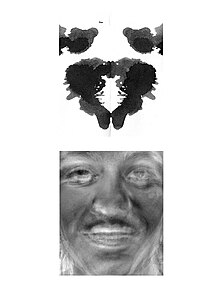Heather Dewey-Hagborg
[1] She is best known for her project Stranger Visions, a series of portraits created from DNA she recovered from discarded items, such as hair, cigarettes and chewing gum while living in Brooklyn, New York.
[20] Exploiting audio surveillance techniques to eavesdrop on and record conversations at the installation site, Dewey-Hagborg wrote algorithms to then isolate word sequences and grammatical structures into commonly used units.
Influenced by Hebbian theory, she programmed the sculpture's computer to generate speech based on the most frequently occurring language structures in any given recording period.
"[22] Stranger Visions (2012–2013) is a science-based, artistic exploration using DNA as a starting point for lifelike, computer generated 3-D portraits.
[14][23][24][25] She began this project questioning how much information could be understood about a person using genetic detritus left behind by strangers in New York City.
[11][1][26][5][27] "I was really struck by this idea that the very things that make us human – hair, skin, saliva, and fingernails – become a real liability for us as we constantly shed them in public.
[3] Once the DNA strands are extracted from the samples, she then amplifies, or copies, specific regions of the genome, using a technique called Polymerase Chain Reaction, or PCR, a process advanced by Kary Mullis, a winner of the Nobel Prize in Chemistry (1993).
The genetic blueprint[12][32] she receives in return is a text file full of coded information identifying the unique positioning of the 4 nucleobases adenine, thymine, cytosine, and guanine, or ATC and G, that make up the sections of the genome she is interested in.
[28][3][30] Some laws, like that of the Human Tissue Act of 2004 in the United Kingdom, prohibit private individuals from collecting biological samples for DNA analysis.
[2] Others worry about the misuse of the information, fearing discrimination based on existing medical or mental health issues or a predisposition for disease-related illnesses or "unreasonable" searches of DNA evidence by law enforcement.
[14][33] Although it is possible to identify certain genetic markers linked to facial structures, scientists have yet to isolate all the genes and their variations needed to produce an accurate likeness with a computer simulation.
[14][6][12][30]The environment, the probabilistic nature of interpreting the DNA data collected, and limitations of computer technology all influence the outcome.
[6][33] Stranger Visions was on view in the exhibition Mutations-Créations / Imprimer le Monde and is in the permanent collection of Centre Pompidou in Paris, France.
[27] Dewey-Hagborg's work with Stranger Visions and interest in issues surrounding genetic surveillance lead to the development of two products whose purpose is to eliminate DNA traces.
"[41] In the summer of 2017 Dewey-Hagborg's collaborative exhibition with transgender activist Chelsea E. Manning A Becoming Resemblance opened at Fridman Gallery in New York City, curated by Roddy Schrock.
Dewey-Hagborg created Probably Chelsea, 30 portraits based on Manning's maternal DNA, their variances in skin color and features presents the malleability of DNA data, and Radical Love, two portraits out of many that Manning selected because they best conveyed her appearance at the time of her gender transition within maximum security prison, which did not allow photography.
[48] Radical Love is on view in the permanent collections of the New York Historical Society[49] and the Victoria and Albert Museum in London.
It examines whether CRISPR gene editing is a radical new technology or merely an extension of the ancient Western practice of selective breeding.
[51] Dewey-Hagborg's work has been exhibited at The Monitor Digital Festival in Guadalajara, Mexico,[29] PS1 MoMA, Long Island City, New York,[5][29] the New York Public Library in New York City, the Science Gallery at Trinity College Dublin, Ireland,[5][52] the UTS Gallery in Sydney, Australia,[5] Wei-Ling Gallery[53] in Kuala Lumpur, Malaysia, the Jaaga Art and Technology Center in Bangalore, India, the Museum Boijmans in Rotterdam, Netherlands, and the Ars Electronica Center in Linz, Austria.










